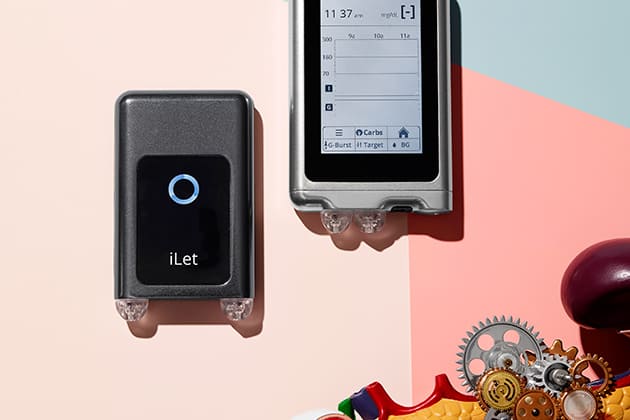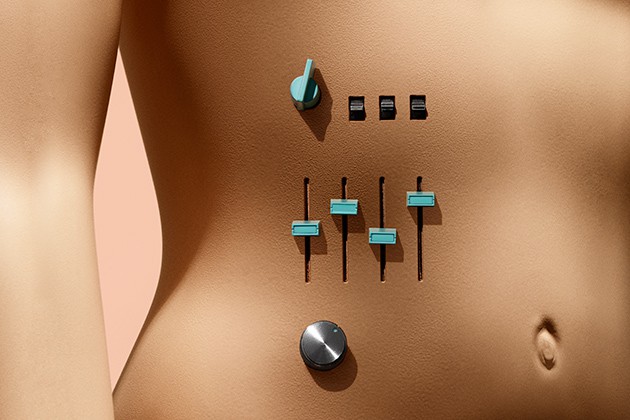Published On January 24, 2018
IN TYPE 1 DIABETES, the pancreas doesn’t produce insulin, a chemical essential for regulating levels of sugar in the blood. This means that people with the condition walk a very narrow path to good health. They must monitor blood sugar levels scrupulously and inject insulin to keep it from soaring. But too much insulin can push blood sugar dangerously low, a condition known as hypoglycemia. Children too young to carry out that level of vigilance and judgment must rely on parents or caregivers, and failure to follow the regimen exactly carries a high cost. Those who have type 1 diabetes can expect to die as many as 13 years earlier than people without the disease.
Even patients who manage to maintain healthy blood sugar levels live with a kind of chronic angst. Kaitlyn Labbe was diagnosed with type 1 diabetes at age six, and she says that she rarely goes more than a few minutes without being reminded she has the disease. Labbe often struggles to sleep out of fear she could become hypoglycemic overnight, which in extreme cases may lead to “dead in bed” syndrome, a phenomenon that is particularly terrifying to parents of children with the disease. Some researchers estimate that it takes the life of about one in 20 type 1 diabetes patients under 40.
“It’s always in the back of your mind,” says Labbe, 35, who lives in Quincy, Mass. “You can’t ever not think about your diabetes.”
But for a few weeks in 2017, Labbe was able to let a machine do most of her thinking. For a study at Massachusetts General Hospital, she wore an artificial pancreas that automatically administered just the right amount of insulin to keep her blood sugar within a healthy range. “It was pretty amazing,” says Labbe, who slept peacefully for the first time in decades while using the system. “It was a gift.”
Doctors have been telling patients that the artificial pancreas was “just around the corner” for more than 60 years, but the quest to get there has been thwarted again and again. Now the model Labbe tested, created by a team led by Boston University professor of biomedical engineering Edward Damiano, is one of several in development that could, finally, fully automate glucose control. Three other groups, also funded by the National Institute of Diabetes and Digestive and Kidney Diseases (NIDDK), are conducting advanced clinical trials of automatic systems. That support comes on top of the more than $100 million spent since 2004 by the JDRF (formerly Juvenile Diabetes Research Foundation) on a dozen or so projects aimed at developing an artificial pancreas. Meanwhile, Medtronic’s MiniMed 670G system, which the Food and Drug Administration approved in 2016, greatly reduces the need for user judgment, and the company is working on a next-generation device that will relieve even more of a patient’s burden.
That’s the point: to take the most unpredictable variable—the patient—out of the equation while also achieving reliable control of blood sugar. According to results of the landmark 1993 Diabetes Control and Complications Trial, led by MGH endocrinologist David Nathan, keeping glucose within a near-normal range, through intensive insulin therapy, reduces the risk of severe complications, including vision loss, kidney and heart disease, nerve damage and stroke.
Yet just one in three adults and one in five children with type 1 diabetes hit the blood sugar targets the American Diabetes Association recommends. “You can’t do that without investing a tremendous amount of energy, and most people can’t do it at all,” says MGH endocrinologist Steven Russell, who collaborates with Damiano on the device they prefer to call a “bionic” pancreas.
A patient must check blood sugar on average 13 times a day to achieve the ADA’s targets, Russell notes. Every five minutes, the device Labbe wore sent data about her glucose levels to an insulin pump, which was programmed to deliver just the right amount of the hormone into her blood. “It makes 288 decisions a day,” says Damiano, “that you no longer have to make.”

TYPE 1 DIABETES OCCURS when the immune system mistakenly attacks and destroys insulin-producing beta cells in the pancreas. As insulin levels diminish, cells are unable to convert blood sugar into energy, causing glucose levels to rise and damage tissues.
Until the 1920s, a diabetes diagnosis was a death sentence for most patients, who usually slipped into a coma and perished from keto- acidosis, in which the body burns fat for energy but poisons itself in the process. In 1921, Canadian physician Frederick Banting, assisted by American scientist Charles Best, first isolated insulin, derived from cow and dog pancreases. Today, thanks to that discovery, the roughly 1.25 million people in the United States who have type 1 diabetes can give themselves the insulin they can’t produce, either injecting it with a syringe or using an insulin pump. (A far more prevalent kind of diabetes, type 2, which afflicts more than 20 million Americans, typically strikes adults and can often be controlled with dietary changes, exercise and oral medication. But some patients with type 2 also eventually require insulin therapy.)
The early hope that insulin would actually cure diabetes, however, didn’t come to pass. Although many who began to take insulin after its discovery lived for years, a significant number developed vision loss, kidney disease and other serious complications related to tissue damage caused by poorly controlled blood sugar. Many children diagnosed with type 1 diabetes did not live past their 20s.
A chief problem, then and now, is knowing how much insulin patients should give themselves. Urine-based test kits that measured blood sugar became available in the 1940s, but they had questionable accuracy. Moreover, patients tended to use less insulin than they needed, wary of pushing their blood sugar too low. Also known as insulin or diabetic shock, hypoglycemia’s steep drop in blood sugar can produce jitters, perspiration, hunger, rapid heart rate and loss of mental clarity, among other symptoms. (Hypoglycemia is responsible for thousands of emergency department visits each year in the United States.)
By midcentury, the promise that technology might relieve patients of some of the burden began to be whispered in research circles, and in an address to the Endocrine Society in 1959, endocrinologist E. Perry McCullagh of the Cleveland Clinic made a bold prediction. “We are on the very threshold of an artificial pancreas,” said McCullagh, who argued that medical equipment available at the time could be automated to control blood sugar and would eventually be miniaturized into a device the size of a paperback book.
McCullagh was overly optimistic about when the artificial pancreas would arrive. The pieces, however, slowly fell into place. In the 1960s, Arnold Kadish, an internist in California, produced the first portable insulin pump, which was worn like a backpack. By the early 1980s, there were pumps that could be clipped to a belt, and those available today are the size of a deck of cards or smaller. They include a computer and a refillable chamber for insulin that attaches with a cannula, or tube, that is inserted into the skin (usually the abdomen).
As insulin pumps have improved, so have options for accurately measuring blood sugar. The first glucose meters to use a drop of blood pricked from a fingertip became available in 1981, and that soon became the standard.
Continuous glucose monitors, which keep a constant watch on glucose levels, became available for research purposes in the early 1970s. The first wearable CGMs hit the market in the early 2000s, and while early versions were notoriously inaccurate, their precision has improved dramatically. A CGM is worn outside the body, but uses a tiny sensor inserted under the skin to detect blood sugar levels, which are displayed on digital readouts and updated every few minutes. A CGM will sound an alarm if glucose concentrations sink or rise too fast.
Yet CGM users often sleep through alarms, and even the most conscientious patients (and parents of patients) can err in choosing insulin doses based on CGM readings. Still, having wearable devices that could efficiently monitor blood sugar levels and deliver insulin meant that the pieces were in place to automate insulin delivery.

WHEN HIS 11-MONTH-OLD son, David, was diagnosed with type 1 diabetes in 2000, Boston University’s Ed Damiano gave himself a crash course in the disease and the technology available for controlling blood sugar. Tasked with constantly measuring his son’s glucose levels and trying to give him just the right amount of insulin, he realized that what he needed was a computer algorithm—a set of rules designed to solve a problem—that could use data from a CGM to instruct an insulin pump on how to respond to the body’s need for the hormone. The same system might also help regulate another pancreatic hormone, glucagon, which stimulates the liver to release glucose into the bloodstream when blood sugar levels drop.
Damiano enlisted a former graduate student, Firas El-Khatib, now a senior research scientist at Boston University, to develop such an algorithm. In 2006, Steven Russell, then a postdoctoral fellow at MGH, began collaborating with Damiano and El-Khatib after attending a talk Damiano gave at Boston’s Joslin Diabetes Center about developing a bionic pancreas.
Russell was frustrated that so many of his patients, despite their best efforts, struggled to maintain healthy blood sugar levels. “People who are highly organized and think quantitatively, like engineers and accountants, do great with diabetes,” says Russell. “Everybody else? Not so much.” His goal, working with Damiano, was to create a tool all patients could use out of the box.
As Damiano and Russell worked on their system, several other groups pursued their own artificial pancreases. An important milestone came in 2009, when the European Union approved a Medtronic system that combined a CGM and insulin pump that automatically stopped delivering insulin when blood sugar dropped too low—a feature known as “SmartGuard Suspend before low”—making it the first system to use data about glucose levels to alter the behavior of a pump.
“The FDA was nervous about having a machine take over administering a drug that was life-saving but could also be dangerous,” says endocrinologist Richard Bergenstal of the International Diabetes Center in Minnesota who has led clinical trials involving patients who used the Medtronic system. It was an understandable concern. In an automatic system, both the CGM and glucose pump must be infallibly accurate. A glitch resulting in just a shade too much or too little insulin could dramatically plunge or spike blood sugar levels, with potentially fatal consequences. But in 2013, Bergenstal and colleagues published a study in The New England Journal of Medicine demonstrating that a system with the low-blood-sugar safeguard reduced the incidence of nighttime hypoglycemia by about 40%. That gave the FDA the further evidence it needed to approve the system the same year, which became the first available in this country featuring an algorithm that made decisions about insulin delivery.
To improve further on that device, Bergenstal and Medtronic received permission to test a system that not only shut off insulin delivery when blood sugar was low but also gave more insulin when levels headed too high. Those trials led to the approval in 2016 of its MiniMed 670G system—currently the closest thing to an artificial pancreas on the market.
More than 30,000 people in the United States were expected to be using the 670G system by the end of 2017, according to Medtronic. “It eliminates 75% of the cognitive load of diabetes—if you let it,” says Jason Gensler, 33, of Denver, who was initially uncomfortable trusting the device and frequently switched it to manual mode so he could adjust the pump’s insulin output. But the 670G system’s algorithm eventually “learned” how best to respond to his glucose levels, and now maintains the kind of tight control of glucose that the ADA recommends. Watching the device respond to changes in his blood sugar, he says, is “mind-blowing.”

WILL A MACHINE EVER really be able to mimic the human pancreas? “Pumping insulin under the skin is never going to get you exactly where you want to go,” says Bergenstal, who notes that insulin produced by the pancreas starts working immediately, whereas injected insulin takes 20 to 30 minutes to begin acting on blood sugar. As a result, even the most conscientious diabetes patient experiences high blood sugar on occasion. Yet it may not be necessary for everyone to achieve what are commonly thought of as normal blood glucose levels. “Studies show that if we can get patients to stay in the target range 80% to 90% of the time, and not experience extremes, we have accomplished a lot,” Bergenstal says.
While it will be years before the long-term health benefits of using an artificial pancreas are evident, there’s little doubt that keeping blood sugar in a normal range not only reduces the risk for common diabetes complications but also adds years to life. The 1993 Diabetes Control and Complications Trial found that aggressive insulin therapy lowers the threat of fatal heart attacks—a common cause of death in diabetes patients—by 57%.
Other developers, including Damiano and Russell, feel they’ve gone further, closely approximating the pancreas’s remarkable ability to monitor and regulate glucose in the blood. The bionic pancreas technology they continue to test in clinical trials, now integrated into a device they call the iLet (a nod to pancreatic islets, clusters of cells that include insulin-making beta cells and glucagon-making alpha cells), gives users the option of administering extra insulin before meals, though there’s no need to estimate how many grams of carbohydrates they’ll eat. Instead, the iLet interface allows users to check off the type of meal—breakfast, lunch or dinner—and whether it will be small, typical or larger than usual. The system’s algorithm adapts to what the user means by each designation and administers enough insulin to keep blood sugar in a healthy range. Moreover, if a user skips the premeal boost—as young people often do, Damiano says—blood sugar will rise, but only briefly, as the machine quickly detects the change in glucose levels and responds with a series of algorithm-selected doses of insulin.
A trial of the device done in 2012 by Damiano, El-Khatib and Russell was the first outpatient test of a fully automated insulin-delivery system. The researchers have shown that, compared with conventional therapy, it improves blood sugar control and reduces hypoglycemia in patients in a home-use setting, allowing them to go about their lives without restrictions on diet, exercise or driving, among other things. Beta Bionics, a company Damiano co-founded, plans to seek FDA approval for an insulin-only version of the iLet by the end of 2019, and within two years the company aims to offer a system with a glucagon pump, too, an addition that would help the device more quickly resolve episodes of hypoglycemia.
Some research is looking beyond the artificial pancreas to device-free methods for managing diabetes, such as “smart” insulin that works only when glucose levels rise too high. Other experimental approaches include implanting beta cells in protective capsules to prevent rejection and immunotherapy to preserve the pancreas’s ability to make insulin. “The artificial pancreas is a bridge to a cure,” says Aaron Kowalski, chief mission officer for the JDRF.
But that bridge is more than welcome to Kaitlyn Labbe and other diabetes patients who are ready to embrace a technology that will free them from the practical and psychological burden of managing diabetes. Labbe plans to get a Medtronic 670G as soon as the warranty on her current insulin pump expires, and when the iLet hits the market, she says, “I’ll be first in line.”
Dossier
“Coming of Age: The Artificial Pancreas for Type 1 Diabetes,” by Hood Thabit and Roman Hovorka, Diabetologia, June 2016. This document provides a concise summary of how scientists have addressed the challenge of developing an artificial pancreas.
“Outpatient Glycemic Control with a Bionic Pancreas in Type 1 Diabetes,” by Steven J. Russell et al., The New England Journal of Medicine, July 2014. This study was the first to test an artificial pancreas in a real-world setting.
“How I Designed a ‘DIY’ Closed Loop Artificial Pancreas,” by Dana Lewis, diyps.org. Blogger and diabetes patient Dana Lewis describes how her desperation drove her to build an artificial pancreas, which has been widely copied.
Stay on the frontiers of medicine
Related Stories
- For Diabetes, a Better Crystal Ball
An ambitious data project may help doctors predict when a patient’s diabetes will take a turn for the worse.
- The Food Pharmacy
Poor diet makes some health conditions much worse. For Rita Nguyen, that’s an invitation for hospitals to step into the kitchen.